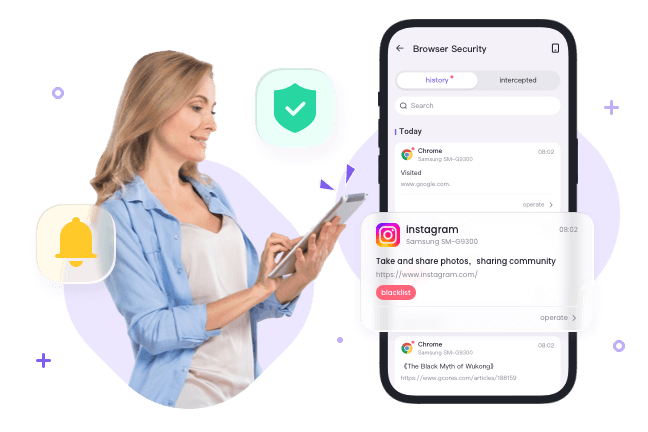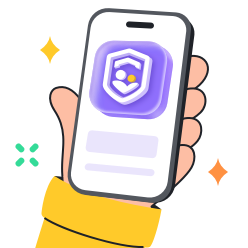Internet communication has become part of teens‘ social life, with numerous platforms like Chat Avenue offering free, open teen chat rooms. These sites attract young users with the promise of anonymity, unrestricted discussions, and opportunities for connection. For teens, these spaces serve as hubs for finding community, support, and entertainment. However, beneath these appealing features lie significant risks.
Parents should understand how these digital ecosystems operate. Being prepared and aware helps the family strike a balance between connectivity and safety. This guide is aimed at helping parents protect teenagers and develop responsible, healthy digital habits.
What is Chat Avenue?
Chat Avenue is a very old online chat site established in 1999. It is free and offers themed rooms that cater to diverse demographics. Every room has its theme, and the users can then engage in topic-based or age-based communities.
Users in Chat Avenue random chat rooms are relatively anonymous, unlike major social media platforms that require creating an account with personal information. The account creation process is fast, and only a username, confirmed age, and photo are optional.
Chat Avenue has an unclear age rating. Although the site identifies a section called teen chat for users aged 13-19, it does not require any age verification. Although the site states it filters adult content in age-restricted rooms, there is little regulation. Such lenient control causes access issues, particularly to unmonitored minors. The adult or dating rooms can be easily accessed by teens regardless of the disclaimers. Such laxity in registration will raise safety concerns.
Key features of Chat Avenue site
Chat Avenue is a web-based product without an official app on mainstream app stores. Users then form chat rooms directly on the site, from any computer or mobile browser.
Core features include:
- No fee: There are no charges to join or subscribe to the site.
- Anonymous messaging: No registration is required; users may register using nicknames.
- Selection of rooms
- Direct communication tools: allow users to use private messaging rather than the general chat.
- Multimedia operations: Multimedia rooms have avatars, minimal profile customization and in extreme instances, audio or video.
- Minimal moderation: Moderation relies on volunteer filters or reports. Such systems are not always able to record bad behavior.
Such a basic design is the reason why the platform has been popular over time. The chat avenue teen login does not require personal verification, which makes it convenient but dangerous. Still, adolescents do not give much thought to how anonymity may be provocative or suggestive.
Keep the Conversations Safe: Empower Your Teen in Online Spaces
Why are teens drawn to free chats on Chat Avenue?
Chat institutions such as Chat Avenue have been flourishing on the teenage curiosity and social desire. Adolescence is a period of development that is characterized by exploration, identity formation and social belonging. Such primitive needs make most teens turn to virtual communities.



- Curiosity and exploration: Adolescents are curious about new territories. Chat rooms are one of the online frontiers that satisfy this requirement. The possibility of speaking with people worldwide can be thrilling.
- Social connection: Many teens resort to online sources to overcome feelings of loneliness. There is instant access to peers through free chat rooms like ChatAvenue. These social networks retain their social associations even when they are confined by school or social restrictions.
- Anonymity and freedom: Anonymous chatting, to some extent, reduces the interactive pressure on teenagers, making them more willing to express themselves and share their opinions freely. This anonymity may also give them an illusion of complete safety and freedom. The pseudonymous form encourages experimentation with identity and forms of communication.
- Peer influence: When friends use teen chat platforms, others tend to follow. Social evidence makes one participate. The trend cycle reinforces the usage, even when teens are aware of the possible dangers.
The temptation of social satisfaction, along with its availability, is why Chat Avenue remains a relevant product. However, being aware of this request helps parents treat the subject matter with sympathy rather than apprehension.
Potential risks of Chat Avenue teen chat rooms
Although Chat Avenue provides a free and open communication platform, its lack of moderation and safety measures raises several concerns for young users. The platform’s loosely structured environment provides minimal protection, particularly for teens, making them vulnerable to various online dangers.



Exposure to inappropriate content
The conversations in unmoderated rooms may easily become that explicit. Young teens can be exposed to profanity, risky links, sexual requests, or even nude images. Such content is rarely picked up by the platform filters.
Cyberbullying and cyberstalking
The anonymity of Chat Avenue fosters a breeding ground for cyberbullying and cyberstalking. That shields hostile users who harass others without fear of accountability. Teens may get abusive messages or become victims of personal attacks.
Data privacy concerns
Chat Avenue gathers limited user data and does not offer encrypted privacy measures. Hackers or third parties can intercept shared information. Additionally, when users share personal info like address, phone numbers, or photos, they expose themselves directly to potential privacy breaches.
Scams and grooming
This lack of authentication makes it easy for people of all ages to join and interact in the same chat rooms. This opens a gate for predators and scammers to target the minors. Online grooming begins with trust-building and progresses to manipulation. An adolescent unfamiliar with red flags might be particularly susceptible.
Psychological impacts
Having bad experiences online has an influence on self-esteem and mental health. Constant exposure to dangerous confrontations can lead to anxiety, depression, or inappropriate imaging of self.
Sites like Omegle, which follow a similar unregulated model, have faced significant criticism and have been shut down or rebranded following safety scandals. In a broader sense, Chat Avenue teen chat rooms fail to meet modern safety standards. Parents should realize that this type of environment would flourish on user freedom but lacks accountability, putting teens at risk.
What to do if your teen is using Chat Avenue or similar sites?
According to statistical data shared by Bright Path Adolescent Mental Health, 56% of cyberbullying incidents in the U.S. occur in online chat rooms, making them a primary venue for such harassment. But do not be frightened if you find out your teen is on sites like Chat Avenue. The key actions of parents should depend on communication, education, and control rather than confrontation. Rather than isolating your teen from these digital spaces, equip them with the knowledge and tools to navigate them safely.



Stay calm, foster open communication and trust
Respond calmly if you learn that your teen uses the chat avenue teen chat rooms. Avoid immediate punishment. Promote frankness of experience. Ask open-ended questions. Be expressive of comprehension and care and not judgment. Trust builds cooperation.
Harmless discussions help teens explain why they enjoy online conversations. Most just want to be friends or be part of something. Teenagers are better at listening to their parents.
Teach teens about online dangers
Talk about actual cases of internet danger. Discuss grooming techniques, identity fraud and emotional abuse. Present such terms as digital footprints and privacy. Underage people need to know that anonymity on the Internet can have negative consequences.
Make them understand that they should never give any personal information. Educate them to identify the manipulation or wrong requests.
Choose and preview safer options for your child
There are fewer unsafe chat platforms that have strict community rules. Apps with strong moderation and safety features can responsibly meet teens’ social needs. Instead of unregulated chat rooms, parents may propose moderated communities such as Discord servers with safety settings, Kinzoo, or Popjam.
Compare open anonymous spaces to the age-appropriate social apps. Offering secure options honors teens’ freedom without endangering their lives.
Configure privacy and parental controls
Contemporary parental control applications offer robust supervision features. Tools such as FlashGet Kids make it easy for parents to monitor web usage. It regulates screen time, filters unsafe sites, and tracks app use in the background.
FlashGet Kids can help parents to:
- Restrict browser use to confirmed secure locations.
- Block out chat domains.
- Filter through messages without reading personal messages.
- Balance between screen time and offline use.
Open communication combined with safety technology ensures a balanced digital security plan. Parental involvement does not override parental control apps.
Set clear boundaries and expectations for Internet use
Establish guidelines and boundaries for your children’s online activities, including permitted websites and screen time. State accountability measures softly. Demonstrate the reasons for the existence of rules without putting them in the context of punishment. Mutual respect helps maintain these boundaries over time. Families can develop safety commitments emphasizing good digital citizenship. Instead of bans, parents should promote responsible use and critical thinking.
Takeaways
Chat Avenue and other free chat rooms are a potential threat. Adolescents who are visiting chat avenue teen rooms are in need of connection and expressing themselves. However, the fact that they are vulnerable in these anonymous spaces calls upon the watchfulness of parents.
Parents should remember these key takeaways:
- Trust forms the foundation of open communication. When the teens are respected, they will open up. Free debate strengthens superior decisions online.
- Education empowers teens to make responsible, independent choices. Educate children about the need to be suspicious of strangers and to protect their personal information.
- The technology favors control. Tools like FlashGet Kids help track and block unsafe online interactions.
- Balance prevents rebellion. Rather than throwing them away, mentor them to less risky options that will keep them connected.
In conclusion, the internet is a reflection of reality. Adolescents need to have a chance to experiment, but in a secure setting. The role of parents is not limited to strengthening resistance and prudence.

